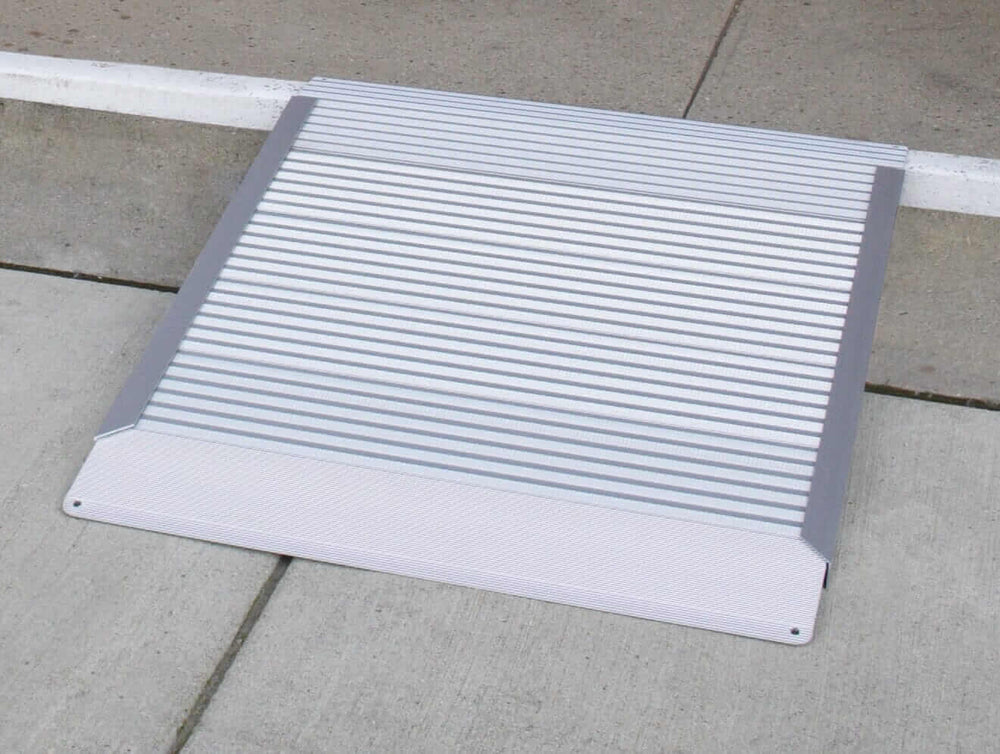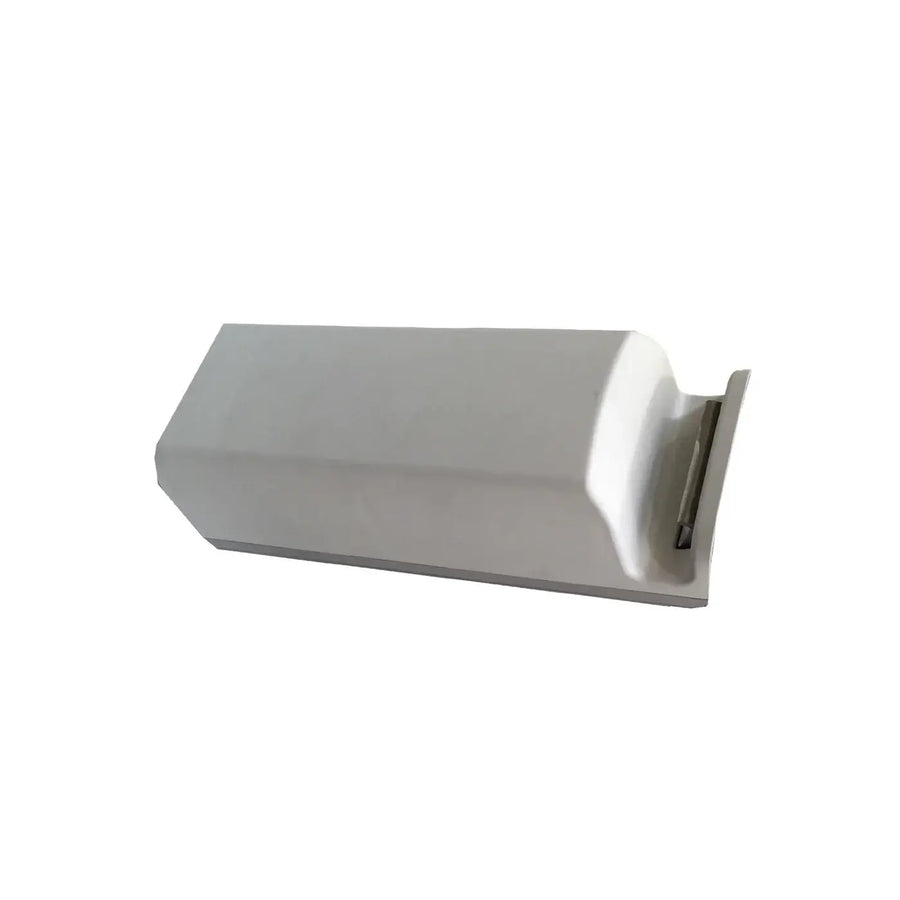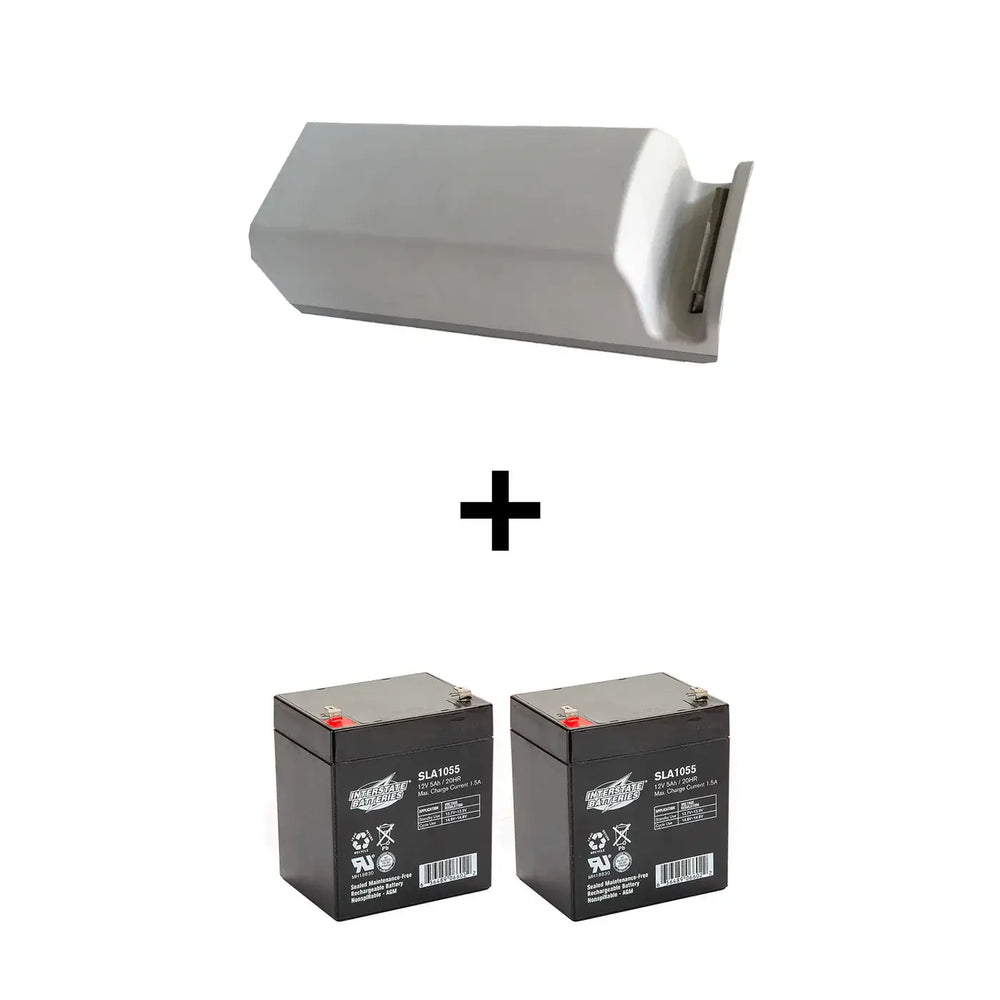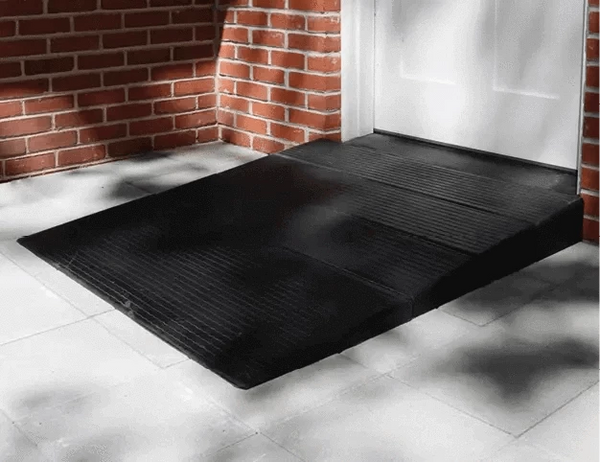What Is The Standard Width of a Wheelchair Ramp?
Introduction
Wheelchair accessibility is an important part of both public spaces and private homes, providing essential mobility solutions for individuals with diverse abilities. The availability of accessible pathways is not just a convenience but a necessity in may instances.
In this blog, we cover a core aspect of these mobility aids – the width of Wheelchair Ramps. We'll explore the widths of different ramps, Regulations, and best practices governing the width of these ramps, shedding light on the main details for anyone planning to install or use them.

Table of Contents
The Basics & ADA Guidelines
Other Portable & Threshold Residential Wheelchair Ramp Widths
Understanding Wheelchair Ramp Basics
In the world of accessibility, understanding what kind of ramps are available, as well as the sizes that are available for each style of ramp is important. When it comes to ramps, diversity is the name of the game. From compact Threshold Ramps, perfect for smoothing transitions at doorways, to versatile Portable Ramps that can travel with you, and the robust Modular Ramps designed for both residential and commercial settings, the options are vast. We'll take a closer look at the basics of wheelchair ramps and explore the different types and their widths and how they cater to a wide array of needs, whether at home or in public spaces.
ADA Guidelines for Wheelchair Ramp Width
The Americans with Disabilities Act (ADA) plays an important part in ensuring equal access and inclusivity for individuals with disabilities in the United States. It sets stringent standards for accessibility in public and commercial buildings, and this extends to wheelchair ramps.
The ADA guidelines outline the minimum width requirements for wheelchair ramps to ensure that they are safe and accessible for individuals using wheelchairs, walkers, and other mobility aids. The minimum width of a wheelchair ramp should be 36 inches (3 feet). This width allows for a comfortable and safe passage for wheelchair users and their companions. While the ADA specifies the minimum width for wheelchair ramps, it does not define a maximum width. To learn more about the ADA Guidelines for Mobility Ramps, check out our blog, "Americans With Disabilities Act (ADA) Ramp Requirements" to learn more.
Complying with ADA guidelines for wheelchair ramp width is not just a legal requirement for commercial ramps, it's a matter of basic human decency and inclusivity. Here are some crucial reasons why adhering to these guidelines is essential:
- Accessibility: ADA-compliant ramps ensure that everyone, regardless of their mobility or disability, can access and navigate public and commercial buildings independently.
- Safety: Wheelchair ramps that meet ADA standards are designed to be safe, reducing the risk of accidents and injuries for both wheelchair users and others.
- Legal Compliance: Non-compliance with ADA guidelines can result in legal consequences, including fines and the potential for lawsuits.
- Positive Image: Demonstrating a commitment to accessibility can enhance the public image of businesses and organizations, showing that they value all customers and visitors.
- Broader Customer Base: An accessible environment attracts a more diverse customer base, potentially increasing revenue and opportunities.
Other Portable and Threshold Residential Wheelchair Ramp Widths
In addition to the ADA guidelines for wheelchair ramp width in public and commercial spaces, residential settings also require accessible solutions. When it comes to home accessibility, there are various types of ramps that cater to different needs, including rubber threshold ramps and other portable ramps. These ramps come in a range of widths, tailored to suit specific requirements and spaces.
Rubber Threshold Ramps
Rubber Threshold Ramps are a popular choice for residential settings, mainly because they can be tailored to fit the specific threshold requirement of the customer. These ramps are highly versatile and designed to address issues such as uneven thresholds, doorways, or slight elevation changes, making them an ideal solution for both indoor and outdoor use.
One of the notable features of rubber threshold ramps is the flexibility in width. These ramps can range from approximately 41 inches all the way up to 82 inches or more. To add to that, if you have a width that the rubber threshold ramps come in, they’re designed to be cut down to the exact length you’re looking for.
The wide range of widths allows homeowners to select the ramp that perfectly accommodates their specific needs, ensuring a seamless transition between spaces for wheelchair users and those with mobility aids.
Portable Ramps
While residential settings have some flexibility when it comes to ramp design, many homeowners prefer to align their accessibility solutions with the established ADA guidelines to ensure maximum inclusivity. Portable Ramps are a top choice for those who want a width that closely adheres to the ADA-recommended 36 inches. These ramps typically offer widths ranging from 29 inches up to the ADA standard 36 inches, making them compliant with ADA standards or close to it.
Portable aluminum ramps are not only suitable for residential use but also for temporary setups in commercial spaces. Their foldable and easy-to-transport design allows for versatility in different locations, making them ideal for homeowners who need flexibility in their accessibility solutions.
Conclusion
Ramps for wheelchairs and other mobility equipment play a crucial role in public and private spaces. Keeping a respectable width is important, and ADA guidelines emphasize the importance of adhering to minimum width standards for both accessibility and safety. Rubber threshold ramps offer versatility in residential settings, ranging from 41 to 82 inches, ensuring seamless transitions for various users. Meanwhile, portable ramps provide an ADA-compliant option with widths from 29 to 36 inches, enhancing adaptability.
Let Us Know What You Think!
Your thoughts and questions are incredibly valuable to us, and we'd love to hear from you. If you have additional insights to share, your comments can spark meaningful discussions and enhance the collective knowledge of our community. Don't hesitate to ask any questions you may have; our team is here to provide answers and engage with you. So, please, take a moment to leave a comment or question below. Your input is much appreciated!












Leave a comment